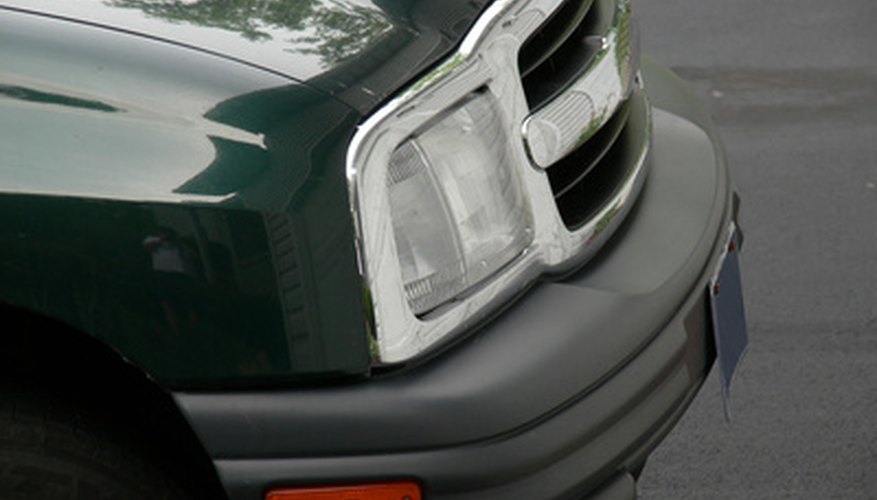Bumpers are shields of plastic, rubber or metal mounted to the front and rear of most vehicles. They use energy absorbers, specially designed brackets or cushioning materials to absorb the shock of a low-speed collision. The National Highway Traffic Safety Administration, NHTSA, a branch of the Department of Transportation, issues Federal Motor Vehicle Safety Standards and Regulations establishing minimum safety performance requirements for all passenger cars bumpers.
Application
49 CFR Part 581, the Department of Transportation's bumper standard, defines performance requirements for passenger cars only. The primary intent of the standard is to reduce physical damage from low-impact collisions, not to reduce passenger injury. Bumper regulations are designed to protect cooling, fuel or exhaust system components as well as safety-related components such as parking lights, headlights and taillights. Pickup trucks, minivans and sport utility vehicles are not covered by the standard because of the potential impact to commercial or off-road performance.
- 49 CFR Part 581, the Department of Transportation's bumper standard, defines performance requirements for passenger cars only.
- The primary intent of the standard is to reduce physical damage from low-impact collisions, not to reduce passenger injury.
Speed Requirement
The bumper standard sets speed requirements for front and rear car bumpers. Requirements have changed four times since the standard was first issued in 1971; they vary according to a car's model year. From 1972 until 1978, the standard required no collision damage to headlamps and fuel systems at 5mph for front bumpers and 2.5mph for rear bumpers. For 1979, the Phase I standard prohibited any damage to safety-related parts and exterior vehicle surfaces at 5mph, but did not limit damage to the bumper system. Cars bumpers manufactured between 1980 and 1982 had to withstand a 5-mph impact with no safety system damage and no damage to the bumper exceeding a 3/8-inch dent and no more than 3/4-inch displacement, a requirement referred to as Phase II. Starting in 1983, impact speeds were lowered to 2.5mph for front and rear collisions and 1.5mph for corner impacts, and Phase I damage criteria was reinstated.
- The bumper standard sets speed requirements for front and rear car bumpers.
- From 1972 until 1978, the standard required no collision damage to headlamps and fuel systems at 5mph for front bumpers and 2.5mph for rear bumpers.
Height Requirement
The DOT's bumper standard requires impact protection in the region 16 to 20 inches above the driving surface. This requirement applies to passenger cars only. Pickup trucks, SUVs and minivans are not covered because their bumper height varies depending on the clearance they need to operate appropriately.
Means of Protection
Manufacturers can provide the required impact protection by any means they chose. They self-certify their bumpers in order to meet the standard. The DOT does not require manufacturers to disclose bumper performance data on new car stickers; most list this information voluntarily.
